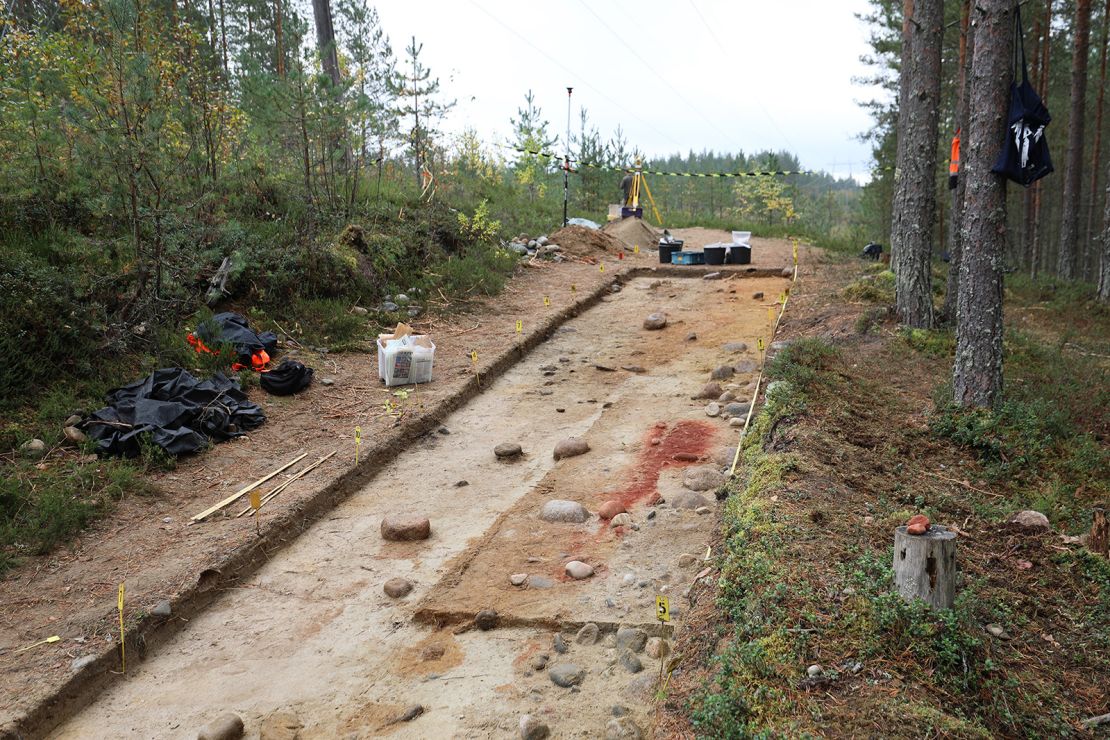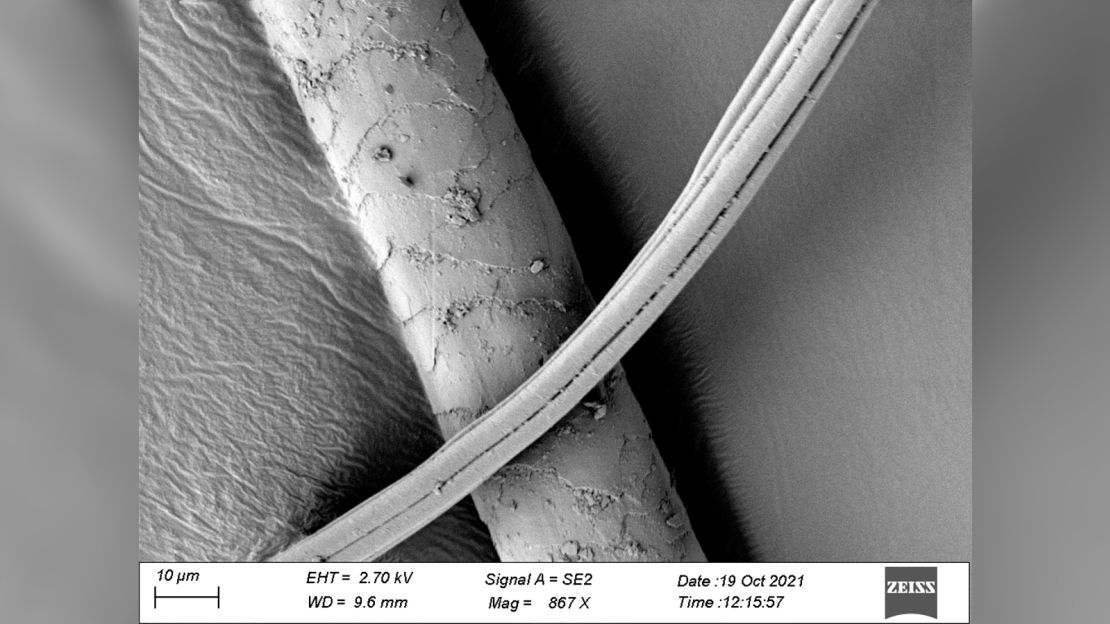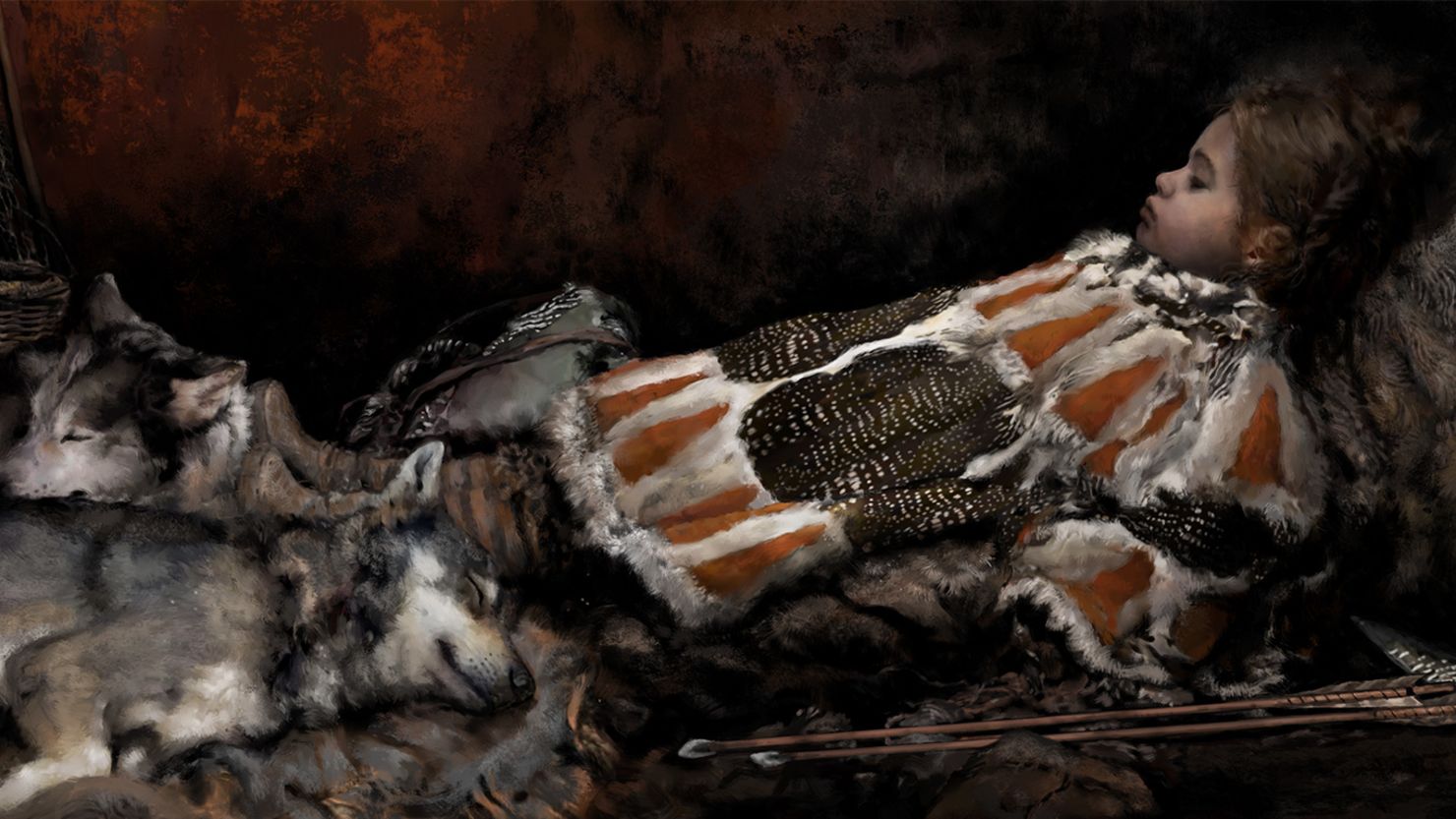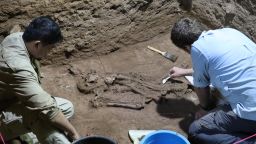Sign up for CNN’s Wonder Theory science newsletter. Explore the universe with news on fascinating discoveries, scientific advancements and more.
The burial site of a young child who lived 8,000 years ago has been discovered in Eastern Finland, providing a rare glimpse into how Stone Age humans treated their deceased.
The Majoonsuo grave first drew the attention of researchers in 1992 in the municipality of Outokumpu when bright red ocher, a clay rich in iron, was spotted on the surface of a new service trail in the forest. Red ocher has been associated with rock art as well as ornamentation and burials.
The Finnish Heritage Agency began excavating the spot in 2018 due to concerns over erosion and motor traffic.
Little was found in the grave, but the surrounding soil revealed its secrets in a recent microscopic analysis published in September in the journal PLOS One.

Finland’s Stone Age societies buried their dead in pits in the ground. The soil is so acidic in Finland that little remains preserved after thousands of years, which means traces of archaeological evidence are extremely rare.
The teeth of a child were found in the grave, as well as fragments of bird feathers, plant fibers and canine hair strands after an analysis using a painstaking protocol to uncover the microscopic evidence.
Together, these clues paint a portrait of the deceased.
Researchers determined that the teeth belonged to a child between 3 and 10 years old. Two quartz arrowheads and two other quartz objects, thought to be grave goods, were also recovered.
About 24 tiny feather fragments were found, and seven of them were associated with waterfowl. They represent the oldest feather fragments ever found in Finland. It’s possible that the child was laid to rest on a bed of down feathers, or the child was wrapped in clothing made from waterfowl, like an ancient parka or anorak.
A falcon’s feather was also found in the grave, thought to be part of an arrow likely once attached to an arrowhead, or used as decoration on the child’s clothing.
Fine hairs found at the child’s feet belonged to either a dog or a wolf. It’s possible that one was buried at the child’s feet, or the child was wearing shoes made from the fur of a dog or wolf.

“Dogs buried with the deceased have been found in, for example, Skateholm, a famous burial site in southern Sweden dating back some 7,000 years,” said study coauthor Kristiina Mannermaa, researcher and associate professor in the University of Helsinki’s department of cultures, in a statement.
“The discovery in Majoonsuo is sensational, even though there is nothing but hairs left of the animal or animals — not even teeth. We don’t even know whether it’s a dog or a wolf. The method used, demonstrates that traces of fur and feathers can be found even in graves several thousands of years old, including in Finland.”
Lead study author Tuija Kirkinen, a postdoctoral researcher in the University of Helsinki’s department of cultures, carried out the analysis of the plant- and animal-based materials within the soil.
The team collected 60 bags of soil samples and carefully separated organic matter from the soil using water. Three laboratories were used to search the samples for microparticles, fatty acids and carry out an analysis of the soil. The soil, stained by the red ocher, had to be gently sieved and was closely studied using electron microscopes and high-resolution images.
She works on the Animals Make Identities project, led by Mannermaa. The research group studies “social links between humans and animals in hunter-gatherer burial sites” in Northeast Europe. These links can unlock more insights into the deceased, who lived between 7,500 and 9,000 years ago. Kirkinen’s work is focused on developing methods to search for the minute remnants that help share ancient stories.
Kirkinen also found plant fibers that likely came from willows or nettles, which may have been used to make fishing nets, cords used to attach clothing or string bundles. The protocol she developed to search for fibers and fragments in the soil takes time, but it produced results.
“The work is really slow and it really made my heart jump when I found minuscule fragments of past garments and grave furnishings, especially in Finland, where all unburnt bones tend to decompose,” she said.
“This all gives us a very valuable insight about burial habits in the Stone Age, indicating how people had prepared the child for the journey after death.”





